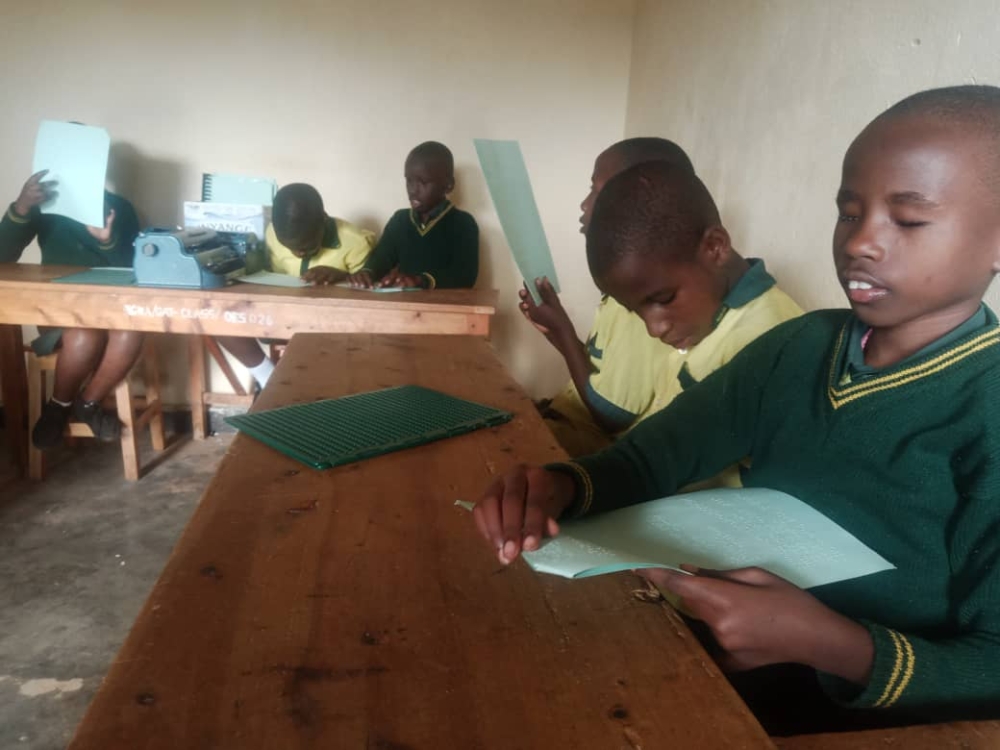

Students with visual impairments in Rwanda are calling for improved access to braille resources and assistive technology to meet their educational needs. They highlighted the importance of accessible learning materials during the World Book and Copyright Day celebrations in Rwamagana on April 23.
At Gatagara high school, a school serving 150 visually impaired students across primary and secondary levels, there is a noticeable shortage of essential tools for braille reading and writing.
Joselyn Ahishakiye, a primary two teacher at the school, explains that students are learning to write using cardboard and pins to create braille letters, but the school lacks sufficient equipment to support their learning.
"We are limited in our resources," Ahishakiye says. "The books we receive from the Rwanda Education Board (REB) often don't meet the specific needs of our students. Translating them into braille is time-consuming and doesn't always align with the curriculum," She said, adding that when students return from holidays, they often struggle to pick up where they left off due to a lack of practice with braille reading, which hinders their progress.
Emmanuel Twizeyimana, a senior six student, points out that visually impaired students often receive summarised content in braille instead of complete textbooks. This limits their understanding and engagement with the material.
"We need more comprehensive resources," he says. "If REB establishes a library at our school with a variety of books in braille, it would significantly enhance our learning experience," He said.
ALSO READ: Textbooks-worth-rwf18-billion-rendered-auselessa
The high cost of braille translation is a significant barrier to providing adequate resources. David Ntakirutimana, who works in the braille production room at Gatagara high school, explains that translating a 100-page book into braille costs about four times more than printing it in standard format.
The process is also lengthy, resulting in students receiving condensed material instead of the full content.
Joan Murungi, Head of the Department of Curriculum, Teaching, and Learning Resources at the Rwanda Basic Education Board, suggests that embracing technology could be a long-term solution.
REB has begun digitising 20 book titles in primary school levels, incorporating interactive audio and sign language to make learning more accessible.
"We are integrating Universal Design for Learning (UDL) technology," Murungi notes, adding that more book titles are planned for digitisation.
Government and non-profit partners like USAID's Uburezi Iwacu project have been working to bridge the gap in educational resources for visually impaired students. Jacques Mugisha, an employee of the project, says that over 900 book titles have been distributed in 12 districts, targeting children aged 3 to 9 years.
Jean de Dieu Munyurangabo, Director General of Kibondo Publishers, emphasises the importance of collaborative efforts in creating an inclusive education system. He stressed that 18 publishers have begun producing books in both standard and braille formats to cater to visually impaired students, contributing to a more equitable educational environment.


